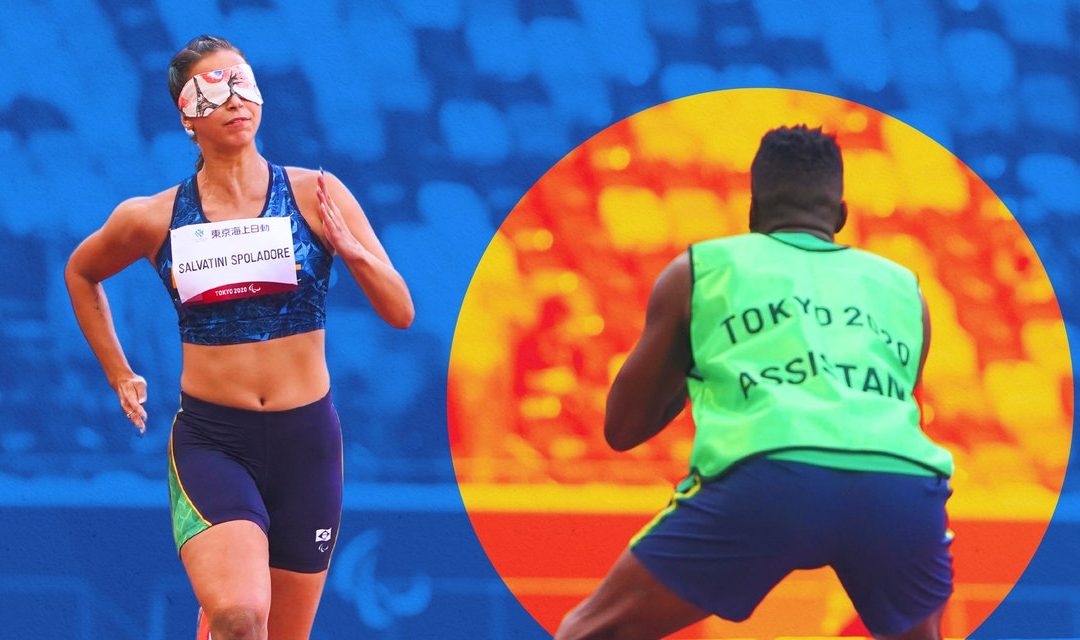The devices they use, also called tappers, are typically homemade; there’s no standard kind. American Anastasia Pagonis, for example, cuts up a pool noodle, covers it with tape, and attaches it to the end of a pole, as she demonstrates in her Instagram reel. Others have used fishing poles or a cane with a tennis ball at the end.
The exact timing and style of the tap—for example, head or back, once or twice, right before the turn or with a few strokes to go—is up to the athlete and their tapper. Each pair must work closely together in training on consistency and coordination, because the tapper can’t speak to the swimmer during the competition.
4. In cycling and triathlon, pilots steer tandem bikes at high speeds.
Visually impaired cyclists, meanwhile, ride on tandem bikes behind a sighted cyclist. The rider up front is called the pilot, and works the gears as well as navigating the road or track. Meanwhile, the para-athlete behind them is the stoker—they generate the power. (The name came from the term for a person who tosses more wood or coal into a fire, stoking the flames, according to the IPC.)
The pair discusses their strategy beforehand. During the race, they might communicate through words or signals. A stoker does more than just pedal—some memorize the course so they’re aware of the twists and turns that are coming up, and they might remind the pilot to stay hydrated.
“You have to have a chemistry, be on the same page, and you have to be consistent (in training),” Mark-Anthony Sanchez, a pilot who has worked with many top para-cyclists, told USParaCycling.org.
5. Para-triathlete guides have a bunch of roles.
Visually impaired triathletes must have one same-gender guide from the same country, Triathlete reports. The sighted person swims with a tether no more than a half-meter ahead of the para-athlete, pilots the tandem bike, and guides with a tether during the running portion.
Meanwhile, para-triathletes with visual and some types of physical impairments can get assistance to move from one event to the next. Handlers or guides can help them get in and out of the water, change out of their wetsuits, get into—or dock—their racing bikes or chairs, or otherwise handle their gear and equipment, according to the IPC.
6. Blind football players listen out for sighted goalies and sideline guides.
Blind football—or blind soccer, as we call it in the US—is a five-on-five game for visually impaired athletes. The ball has a bell inside so players can hear it; they also communicate by shouting “voy” when they’re going for it. The crowd, meanwhile, stays silent unless a goal is scored, so the athletes can hear what’s happening.
Goalies can have partial or full vision and can give direction to the players when they’re on the defensive end of the field. Each team also has two other sighted guides—the coach in the midfield, and another guide at the other end of the field. From there, they can give team members in that one-third of the field information about the position of the ball or other players, or tell them which direction to run.
7. And boccia assistants can do everything from wipe sweat to position the ball.
Boccia is one of two Paralympic sports with no equivalent in the Olympics (the other is goalball). Individuals, pairs, or teams of three start with six red balls or six blue balls. To win, the athlete or team gets the most balls closest to a white ball, or jack.

